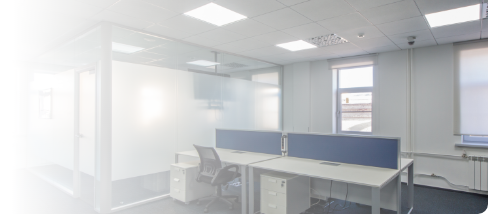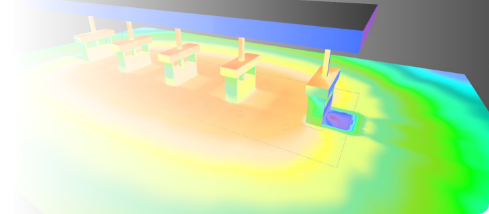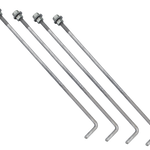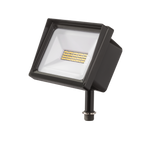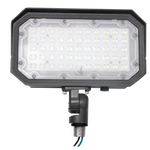You have no items in your shopping cart.
In the realm of commercial LED lighting, there's more than meets the eye. Beyond the glow and luminescence that define spaces, there's a silent operator at work: lighting control systems. While their primary function may seem simple, their impact on businesses, users, and the environment is profound.
As the pace of technological advancement races ahead, we find ourselves on the cusp of a revolution in how we manage, operate, and reap the benefits of these systems. Dive deep with us as we unravel the intricate web of lighting control systems and discover how they're reshaping the future of commercial lighting.
And as champions of innovation in this domain, our own Jarvis Lighting's catalog plays a pivotal role in this illuminating journey. Let's light the path together.
Fundamentals of Lighting Control Systems
Peeling back the layers, lighting control systems may seem intricate, but at their core, they follow a basic principle: regulating the operation of lighting sources to achieve the desired output. This isn't just about turning lights on or off; it's about tailoring lighting solutions to fit specific needs and settings.
Before diving into types, it's essential to grasp the rudimentary building blocks that make up these systems:
- Control Unit: This is the heart of any lighting system, a centralized location where decisions about lighting functions take place, based on input from sensors or manual commands.
- Input Devices: Devices such as sensors and switches that provide real-time data to the control unit, acting as the eyes and ears of the system.
- Output Devices: These are the executors, like dimmers or relays, that carry out the commands issued by the control unit to the lighting fixtures.
- Communication Path: Just as nerves carry messages in our bodies, in lighting control systems, communication paths relay instructions between the control unit and the output devices.
- User Interface: Touch panels, knobs, or even mobile applications that allow human interaction with the system, offering a window into tailoring lighting preferences.
To put things into perspective, imagine a large commercial space such as a warehouse. Keeping lights on throughout operational hours, regardless of need, is akin to burning money. Enter lighting control systems. These systems ensure that only areas in use are lit, while unused sections remain dark, leading to significant energy and cost savings.
Types of Lighting Control Systems
Venturing further into the domain of lighting control systems, it's paramount to understand the array of options available. Every space, be it commercial or residential, possesses unique needs and challenges. The right lighting control system can shine a beacon on those challenges, transforming them into opportunities for efficiency, comfort, and even profitability.
Let's delve into the prominent types of lighting control systems, all the while keeping an eye out for how they might fit seamlessly into your plans, especially when partnered with the superior commercial lighting fixtures from Jarvis Lighting.
1. Manual Control Systems
The age-old method, but by no means outdated. Manual controls are exactly what they sound like: switches, knobs, and dials that are operated by hand. Their beauty lies in their simplicity, ensuring ease of use. For spaces where conditions remain relatively consistent and hands-on control is preferable, manual systems are a go-to.
2. Time-Based Control Systems
Clocks don't just tell time; they can also dictate when your lights go on or off. Time-based systems operate on pre-set schedules. Think of streetlights that light up as dusk falls and dim as dawn breaks. For businesses that operate on fixed hours, this system is a game-changer, ensuring lights are only on when they need to be.
3. Occupancy/Vacancy Sensors
If you've ever walked into a room and had the lights magically turn on, you've encountered these sensors. Using infrared or ultrasonic technology, they detect the presence (or absence) of people. This is ideal for spaces that don't have predictable occupancy patterns – think of conference rooms or restrooms in commercial spaces.
4. Photosensors (Daylight Harvesting)
Sunlight is nature's very own lighting system, and photosensors ensure we make the most of it. By measuring ambient daylight, daylight harvesting sensors adjust artificial lighting to complement natural light, ensuring consistent illumination. This not only saves energy but also creates a harmonious environment.
5. Dimming Systems
Sometimes, full brightness isn't what's needed. Dimming systems give the flexibility to adjust light levels. This is especially useful in spaces where ambiance plays a role, like restaurants, or in office spaces where screen glare can be an issue.
6. Color Temperature Control
Light isn't just about brightness; it's also about tone. Different tasks require different color temperatures. A boardroom meeting might benefit from cool, alert tones, while a cozy lounge might opt for warmer hues. By controlling the color temperature, spaces can be tailored to their purpose.
7. Networked Lighting Control Systems
In our interconnected age, why should lights be left behind? These systems connect lighting controls over a network, enabling centralized monitoring and control. Whether you're dealing with one building or a sprawling campus, this system gives unparalleled oversight.
A perfect example of networked lighting control is Jarvis Link’s technology based on Bluetooth mesh standard: https://jarvislink.com/
8. Wireless Control Systems
Wires, while effective, can sometimes be limiting. Wireless systems offer flexibility and ease of installation, especially in older buildings where retrofitting wired systems would be cumbersome.
With each type comes its own set of advantages, nuances, and potential challenges. The key is to match the right system to the right need.
Benefits of Modern Lighting Control Systems
At first blush, it might appear that the prime purpose of modern lighting control systems is solely to manage illumination. But that's just scratching the surface. These sophisticated systems offer a plethora of benefits, many of which stretch far beyond the domain of lighting.
Paired with cutting-edge fixtures like those from Jarvis Lighting, the results can be nothing short of transformational. Here, we’ll cast a light on these benefits, showcasing how they can contribute to a brighter, smarter, and more sustainable future.
1. Energy Efficiency and Sustainability
The first and foremost benefit that often jumps to mind is energy efficiency. By ensuring lights are on only when needed and at the required intensity, significant energy savings can be realized. Think of an office where, post working hours, only the janitorial staff remains. There’s no need to light up the entire floor – just the zones they’re working in. This isn’t just good for the pocket; it’s a feather in the cap for our planet, reducing carbon footprints.
2. Enhanced User Comfort and Experience
There’s no place like home, and with modern lighting control systems, commercial spaces can offer a touch of that comfort. By personalizing lighting conditions – whether it’s adjusting brightness, color temperature, or even the angle of illumination – spaces can be tailored to user preferences. It’s not just about seeing, but about feeling at ease.
3. Integration and Interoperability
Lighting doesn’t exist in isolation. In today’s connected age, it interacts with HVAC systems, security systems, and even smart devices. Modern lighting control systems are designed to play well with others. This integration leads to smarter buildings, where systems communicate and collaborate to enhance efficiency and user experience.
4. Economic Advantages
The bottom line often drives decisions in the commercial world. Fortunately, modern lighting control systems are allies of the balance sheet. Reduced energy consumption leads to palpable cost savings. But there’s more. Enhanced user comfort can boost productivity. Integration can lead to more streamlined operations. And let's not forget potential tax benefits or incentives for sustainable practices.
Best Practices for Implementing Advanced Lighting Control Systems
Embarking on the journey of integrating an advanced lighting control system can feel like navigating uncharted waters. But, fear not, for with the right compass and map, the path becomes clear. It’s not about jumping in with both feet but about measured steps that lead to an optimal setup. Here, we shine a light on some tried and true best practices that will ensure you not only implement but excel in your lighting control endeavors.
1. Conducting a thorough needs assessment
Before setting sail, you need to know your destination. Conducting a thorough needs assessment isn’t just about understanding your current lighting needs, but it's about forecasting future requirements. Delve deep, question users, understand pain points, and look at the big picture. Are there areas that remain lit unnecessarily? Or spaces where occupants often find the lighting too harsh? These inquiries will serve as your North Star, guiding your choice of control systems.
2. Choosing the right system for the right application
Not all spaces are created equal, and by extension, not all control systems are fit for every space. A sprawling warehouse will have different lighting requirements than a cozy office cabin. It’s crucial to match the system to the application. With a myriad of options at our disposal, it can be easy to get lost in the woods.
Yet, opting for solutions like those offered by Jarvis Lighting can ensure you’re on the right track, providing high-quality fixtures tailored to diverse needs, and the highly efficient Jarvis Link networked control system.
3. Training and educating end-users
The most advanced system in the world won’t make a dent if end-users treat it like a square peg in a round hole. Training isn’t just a nicety; it’s a necessity. From basic operations to troubleshooting common issues, a well-informed user can make the difference between a system that's a white elephant and one that’s worth its weight in gold.
4. Regular system maintenance and updates
The world of technology is ever-evolving. What’s state-of-the-art today might be yesterday’s news tomorrow. Ensuring your lighting control systems are always in tip-top shape isn’t just about addressing wear and tear, but about staying updated with the latest software patches and advancements. A well-oiled machine operates best, and regular maintenance ensures your lighting control systems are always firing on all cylinders.
When armed with these best practices and the backing of reliable partners like Jarvis Lighting, the journey to advanced lighting control is less about encountering rough seas and more about smooth sailing. A thoughtfully executed approach can ensure that your spaces aren’t just well-lit, but are beacons of efficiency, comfort, and sustainability.
Jarvis Lighting: Advanced Lighting controls. Simple implementation.
In the realm of lighting, the journey from mere illumination to advanced control can be a transformative one. As we tread this path, it's pivotal to have a partner that doesn’t just light the way but also simplifies the route. Enter Jarvis Lighting, a beacon in the commercial LED lighting arena.
Why Jarvis Lighting stands out in a crowded marketplace:
Navigating through the maze of options in the commercial lighting world can feel daunting. Amidst this, Jarvis Lighting emerges as a clear frontrunner, embodying the ethos of providing state-of-the-art solutions without complicating the journey.
1. Crafted with Purpose:
Every product under the Jarvis Lighting umbrella is a testament to thoughtful engineering. It’s not merely about illumination, but optimizing the lighting experience for each unique space. Electricians and businesses alike can find solace in knowing that with Jarvis Lighting, they're not just getting a product but a solution.
2. Flexibility is Key:
The lighting needs of a vast warehouse differ starkly from those of an intimate boardroom. Recognizing these nuances, Jarvis Lighting offers a wide array of products, ensuring there's a perfect fit for every requirement. Whether it's a robust outdoor lighting fixture or a sophisticated indoor ambiance creator, Jarvis Lighting has it all under one roof.
3. Unwavering Commitment to Quality:
In a world where cutting corners has become the norm, Jarvis Lighting bucks the trend. Our unwavering commitment to quality means that every product not only meets but often exceeds industry standards. It’s not about being a flash in the pan, but a constant glow that stands the test of time.
4. Unparalleled Support:
The relationship with Jarvis Lighting doesn’t end once the product leaves their warehouse. With a dedicated support team, businesses and electricians can rest assured that any questions, concerns, or needs will be addressed promptly. After all, the brightest relationships are built on trust and reliability.
In conclusion, while the journey to lighting control might be filled with decisions, one choice is clear - partnering with Jarvis Lighting and our networked lighting control system Jarvis Link. It's not just about advanced fixtures and lighting controls, but also about a seamless and straightforward implementation.

